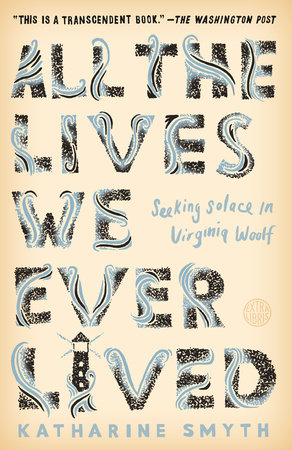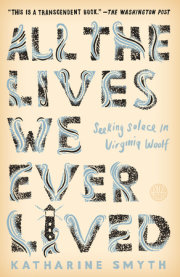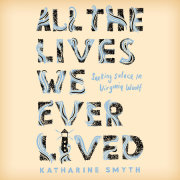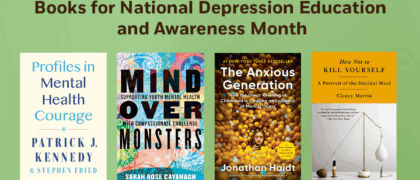PART ONE
1
“The house was all lit up, and the lights after the darkness made his eyes feel full, and he said to himself, childishly, as he walked up the drive, Lights, lights, lights, and repeated in a dazed way, Lights, lights, lights, as they came into the house.”
When I was five, my parents bought a summerhouse. For years we had spent our weekends sailing, driving between our home in Boston and the Rhode Island marina where we kept the boat, and for years my parents had admired the row of waterfront cottages they could see from the highway bridge. One weekend, leaving me with friends, they stopped at a local real estate agency. “The houses on the water almost never come up,” the agent said, not quite truthfully, “but one came on the market this morning.” She took them to see it, a wooden house built in 1890 and in a state of price-deflating disrepair. Sheets of plastic were stapled across its windows; to one side was a garage, to the other a desiccated lawn and concrete steps leading to the water. The small adjoining lot was full of rubble, all that remained of a shack annihilated by a hurricane fifty years before. A night nurse was the house’s current occupant, and my parents had to wait until midnight before they were shown inside. They found rooms cramped and badly lit. Dampness seeped from the basement’s earth floor. A bare wooden deck faced the water, but it too was wrapped in thick plastic. We’ll take it, my parents said, and in the morning signed the papers.
Both architects, they spent the coming months drawing up plans. They tore down walls and put up new ones; winterized the basement and made it their bedroom. A new deck ousted the living room, and the old deck became the dining room. The garage was transformed into a studio, the empty lot to the south a garden, and every wall that faced the water became a wall of windows. We devoted our weekends that winter to supervising the renovation. A beastly wind leapt off the basin, slipping through cracks and ripping at the plastic sheets that now stood in for windows altogether. The house then was a skeleton; from the water, it looked like an architectural cross section. We wore winter coats indoors. I spent my time collecting the sawdust that drifted like snow into the corners of rooms—I liked how light and downy and dry it was—and when, come spring, the house was finally finished, I mixed this sawdust with glue, molded it in the shape of a heart, and baked it in the oven.
That summer my parents planted an olive tree, a dogwood, a Japanese maple, and star magnolias. They put in rose bushes, honeysuckle, and a porcelain vine to soften the deck. They hoped a wisteria plant would gently envelop the trellis over the sunken yard; instead the vine grew freakishly, its weighty boughs promising to fell the structure altogether. My father vowed each summer to rip the wisteria out at its roots, and each summer my mother protested, citing the two glorious May weeks in which it shot forth its cloud of amethyst flowers. There were rolls of sod that steamed in the sunlight—my father carried them from the car, set them down on the soil, and gave them a push, unfurling each one like a long green carpet. For a few weeks they showed at the seams, but then the roots plaited together, and I could no longer tell where one piece stopped and the next began. Something similar happened inside, where the rooms at first were neat and spare: one day I looked around me and realized our expanding lives had filled the gaps. We learned quickly how bleached things become in a house on the water, how exhaustively salt and light leach color, leaving behind pale blues and yellows. The spines of books, the cork-tiled floors, the rugs and prints and bed linens—each became a cheerfully bloodless version of itself. Before my parents were finished they built a dock and then they put down a mooring of their own. There is a photograph of the three of us posing beside this hunk of chain and metal; it was the last time we would see it before sending it down to the bottom of the sea, to settle in the mud and provide a stay against the tides to come.
The next summer—I must have been about seven—my father and I built a doll’s house. It was a pretty Victorian home with two bay windows, a wraparound verandah, and scalloped trim along the eaves, and it demanded many months of work; I can still recall the care with which we affixed each individual baluster and shingle, the tackiness of the glue we used to wallpaper the rooms. We painted the woodwork in colors reminiscent of our Boston home: dark green, slate blue, taupe, and russet red. In another photograph from that time, the half-finished doll’s house sits at the end of the dining table; through curtainless windows, you can see the lights on the far shore double in the water’s surface. My father is consumed by the application of some fixture or other, and I, wearing a flannel, rose-print nightgown, hair matted, am standing on a chair and supervising. I loved playing with that house when it was finally finished; and yet the greatest pleasure of all was in its construction, in the evenings that my father and I passed together in nearly wordless concentration.
The divide between week and weekend was extreme then, and when I considered the difference, I thought of something he had told me when we were sailing, as our boat, Mistral, was heeling and the wind filling our throats. In Boston our lungs were black and horrible, he said, but in Rhode Island they were lovely and shiny and pink. It was an image I held on to as I went about my days—days that I filled with pointed yet purposeless tasks (paddling to nearby sand dunes; watering the rock wall moss), much as a cat will suddenly decide that now is the moment she must leap from the window and dash to the couch.
The specter of boredom gave rise to ingenuity, I think, which is how I came to clomp down the beach in my roller skates, and make the acquaintance of a horse-shaped boulder I named Star, and build a nest beneath the billiard table, and run barefoot up and down the street; by mid-July, I could stick sewing needles deep into my heels without sensation. I loved beachcombing best, though—every day I spent hours wandering the rocky strand at the foot of the seawall, collecting sea glass, broken bits of blue-and-white china, lady’s slippers, conch shells, the forsaken skeletons of horseshoe crabs, and, once, a rusty key chain from the Stone Bridge Inn, a hotel a mile down the road that had shuttered twenty-five years earlier. When I’d gathered enough shells, my father took me to the hardware store to buy a diamond drill bit—the only tool strong enough, he said, to bore into the lady’s slippers and make a necklace for my mother. It was years before I noticed the peculiar quality of light the days here possessed, how on afternoons and evenings the house would flood with lemon heat, or how the reflection of the water outside, at once blue and gold and glittering, would throw itself against the ceiling, transforming the rooms into a string of tide pools. But from the very beginning, I felt that light within my lungs.
“if life has a base that it stands upon,” Virginia Woolf wrote in “A Sketch of the Past,” her longest and most abundant memoir, “if it is a bowl that one fills and fills and fills—then my bowl without a doubt stands upon this memory. It is of lying half asleep, half awake, in bed in the nursery at St Ives. It is of hearing the waves breaking, one, two, one, two, and sending a splash of water over the beach; and then breaking, one, two, one, two, behind a yellow blind. . . . It is of lying and hearing this splash and seeing this light, and feeling, it is almost impossible that I should be here; of feeling the purest ecstasy I can conceive.” This brilliant, sea-filled nursery belonged to Talland House, the nineteenth-century home in Cornwall where Virginia, her parents, and her seven siblings spent every summer until she was thirteen. She called this recollection “the most important of all my memories,” and, much like the schism between my own childhood weeks and weekends, its radiance was in sharp contrast to her impressions of her family’s London home, a dim, narrow, six-story townhouse in Kensington where “busts shrined in crimson velvet, enriched the gloom of a room naturally dark and thickly shaded,” and where, in the words of her sister Vanessa, “faces loomed out of the surrounding shade like Rembrandt portraits.”
Talland House—its light, its cresting water—would be consecrated in Virginia’s imagination, saturating not only To the Lighthouse but also Jacob’s Room and The Waves. “To go sailing in a fishing boat,” she waxed in her late fifties, “to scrabble over the rocks and see the red and yellow anemones flourishing their antennae; or stuck like blobs of jelly to the rock; to find a small fish flapping in a pool; to pick up cowries; to look over the grammar in the dining room and see the lights changing on the bay. . . . All together made the summer at St Ives the best beginning to life conceivable.” The tumbling passage conveys the lasting vigor of these memories; as Hermione Lee notes in her terrific biography of Woolf, Talland House “is where she sites, for the whole of her life, the idea of happiness. . . . Happiness is always measured for her against the memory of being a child in that house.”
When Virginia’s mother died of rheumatic fever in 1895, the Stephens’ visits to Talland House abruptly ceased. “Father instantly decided that he wished never to see St Ives again,” she recalled. “And perhaps a month later Gerald [Duckworth, Virginia’s half brother] went down alone; settled the sale of our lease to some people called Millie Dow, and St Ives vanished for ever.” Some thirty years later, this sudden, devastating break—the actual and figurative end to Virginia’s childhood—would become the inspiration for To the Lighthouse, in which she transposed Cornwall’s Talland House, seemingly in its entirety, to the Hebrides, a cluster of islands off the coast of Scotland to which she had never been. (“An old creature writes to say that all my fauna and flora of the Hebrides is totally inaccurate,” she wrote to Vita, and to Vanessa: “there are no rooks, elms, or dahlias in the Hebrides; my sparrows are wrong; so are my carnations.”) This house and its story are, quite literally, at the novel’s center, as vital to it as the Ramsays and their friends; which is why, during a trip to England to celebrate my grandmother’s ninety-ninth birthday, I made a St Ives pilgrimage: I wanted to see what the Cornish landscape might teach me, not just about To the Lighthouse and its author but also about those homes by which we measure happiness.
It was a clear afternoon in June when I boarded the train in my grandmother’s village; sipping wine, passing through Tiverton—the namesake of our Rhode Island town—I was feeling as dreamy as Virginia about the coming journey. “This time tomorrow,” she wrote in 1921, “we shall be stepping onto the platform at Penzance, sniffing the air, looking for our trap, & then—Good God!—driving off across the moors to Zennor—Why am I so incredibly & incurably romantic about Cornwall?” My train pulled in at half past eight, but the sun was still high above the houses, and I thought I could see through the gaps in the buildings the white stripe of Godrevy Lighthouse. Then, suddenly, I turned a bend and St Ives Bay unveiled itself, the same view, more or less, that causes Mrs. Ramsay to stop short, exclaiming aloud at its beauty. “For the great plateful of blue water was before her,” we first hear of the novel’s beacon, “the hoary Lighthouse, distant, austere, in the midst; and on the right, as far as the eye could see, fading and falling, in soft low pleats, the green sand dunes with the wild flowing grasses on them.” I had read those words a hundred times, and the image they had always conjured was of a seascape much nearer and brighter than this one; for here the lighthouse stood no taller than a matchstick upon its little pile of black rock, and I had to squint to see the thin green lines of land.
But I liked this readjustment of my vision; in fact it was an enlargement, the gentle pop of a jigsaw puzzle fitting together; and then again when I took a wrong turn after dinner and the cobblestone path curved round and up to reveal a vast sandy beach, with regular waves coiling and crashing in rows of four. The last bit of light shone through between the clouds, and the water beat against the sand—I would hear it all night through my bedroom window—and I knew then what Virginia meant when she wrote, addressing Cornwall’s pull for her, of “old waves that have been breaking precisely so these thousand years,” and when she wrote, in her original notes for To the Lighthouse, that “the sea is to be heard all through it.” As much as anywhere I’ve ever been, the sea is the lifeblood of St Ives.
The following morning, I made my way to Talland House. I didn’t have a house number, so I relied on Woolf to help me find it. “A square house,” she said, “like a child’s drawing of a house; remarkable only for its flat roof, and the crisscrossed railing.” When, at the end of a cul-de-sac, it finally materialized, I felt a stab of disappointment. Its ivory walls were streaked with rust, and a tangle of exterior metal staircases, providing access to second- and third-floor flats, crept up the rear. A Ford Focus was parked in the driveway. I was still debating my approach when a beefy young man in blue sweatpants walked out with a Rottweiler—the epitome of a Virginia Woolf fan, in other words. “Yeah?” he asked, suspicious.
“I’m just looking at the house,” I said. “You know Virginia Woolf lived here?”
“Yeah?”
“Is it okay if I look around?”
“Yeah,” he said again, gesturing toward a snarl of vegetation. “There’s a lawn round back if you like.”
I thanked him, wondering how many seekers had appeared at his door, then plunged into the upper garden. I knew the grounds were greatly changed; much of the land had been sold off, and a parking lot replaced the orchard. But I could still see what Leslie Stephen had meant by “a garden of an acre or two all up and down hill, with quaint little terraces divided by hedges of escallonia.”
Copyright © 2019 by Katharine Smyth. All rights reserved. No part of this excerpt may be reproduced or reprinted without permission in writing from the publisher.












